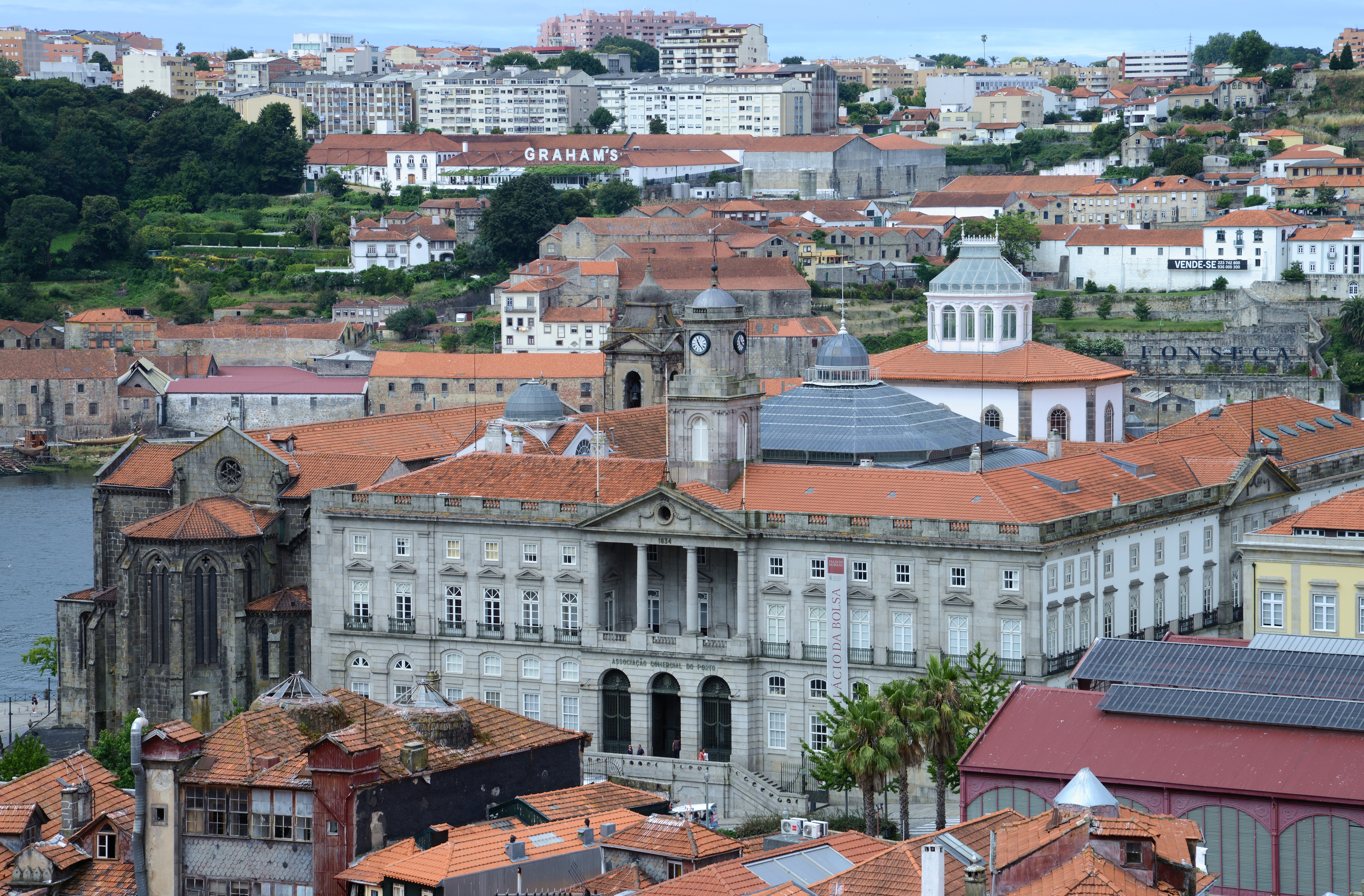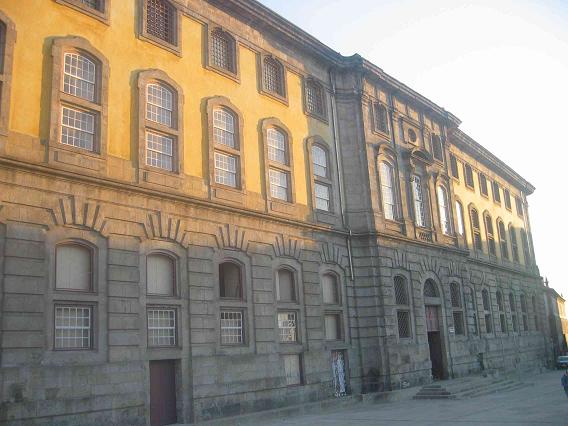|
Palácio Da Bolsa
The Stock Exchange Palace () is a historical building in Porto, Portugal. The palace was built in the 19th century by the city's Commercial Association () in Neoclassical style. It is located in the Infante D. Henrique Square in the historical centre of Porto, designated World Heritage Site by UNESCO. History The Palácio da Bolsa is located beside the St Francis Church of Porto, which was once part of the St Francis Convent, founded in the 13th century. In 1832, during the Liberal Wars, a fire destroyed the cloisters of the convent, sparing the church. In 1841, Queen Mary II donated the convent ruins to the merchants of the city, who decided to use the spot to build the seat of the Commercial Association. Building work began in 1842 following the plans of Porto architect Joaquim da Costa Lima Júnior, who designed a Neoclassical palace of Palladian influence, inspired by previous structures built in the city. Most of the palace was finished by 1850, but the decoration of the in ... [...More Info...] [...Related Items...] OR: [Wikipedia] [Google] [Baidu] |
Porto July 2014-31a
Porto or Oporto () is the second-largest city in Portugal, the capital of the Porto District, and one of the Iberian Peninsula's major urban areas. Porto city proper, which is the entire municipality of Porto, is small compared to its metropolitan area, with an estimated population of just 231,800 people in a municipality with only 41.42 km2. Porto's metropolitan area has around 1.7 million people (2021) in an area of ,Demographia: World Urban Areas March 2010 making it the second-largest urban area in Portugal. It is recognized as a global city with a Gamma + rating from the |
Carlos Amarante
Carlos Luís Ferreira da Cruz Amarante (Braga, 1748 - Oporto, 1815) was an important Portuguese engineer and architect. Amarante's father was musician in the court of the Bishop of Braga. He began pursuing an ecclesiastical career, but left the seminary when he was 23 years old to marry Luísa Clara Xavier. After that he pursued a career in engineering and architecture. Artistically, Amarante led the transition between the late Baroque-Rococo architecture of northern Portugal to modern Neoclassical architecture. He was particularly influenced by the many Neoclassical buildings of English inspiration that were built in Oporto during the 18th century. The church of the sanctuary of Bom Jesus do Monte, built after 1784 to a design by Amarante, is considered one of the first Portuguese churches in Neoclassical style. Amarante is buried in the Trindade Church in Oporto. Works *Bom Jesus do Monte - Braga *Populo Church - Braga *Hospital Church - Braga *São Gonçalo Bridge over th ... [...More Info...] [...Related Items...] OR: [Wikipedia] [Google] [Baidu] |
Museums In Porto
Porto, a popular tourist destination in Portugal, is the country's second largest city. It is located along the Douro, Douro river estuary in Northern Portugal. Porto is one of the oldest European centers, and its historical core was classified a World Heritage Site by UNESCO in 1996. Landmarks Religious sites Museums Parks and gardens Others Nearby places See also * Porto * Tourism in Portugal References External links Official website of Porto City Hall {{Wikivoyage, Porto Lists of tourist attractions by city, Porto Tourist attractions in Porto Lists of tourist attractions in Portugal, Porto ... [...More Info...] [...Related Items...] OR: [Wikipedia] [Google] [Baidu] |
Tourist Attractions In Porto ...
Porto, a popular tourist destination in Portugal, is the country's second largest city. It is located along the Douro river estuary in Northern Portugal. Porto is one of the oldest European centers, and its historical core was classified a World Heritage Site by UNESCO in 1996. Landmarks Religious sites Museums Parks and gardens Others Nearby places See also * Porto * Tourism in Portugal References External links Official website of Porto City Hall {{Wikivoyage, Porto Porto Tourist attractions in Porto Porto Porto or Oporto () is the second-largest city in Portugal, the capital of the Porto District, and one of the Iberian Peninsula's major urban areas. Porto city proper, which is the entire municipality of Porto, is small compared to its metropol ... [...More Info...] [...Related Items...] OR: [Wikipedia] [Google] [Baidu] |
Palaces In Porto
A palace is a grand residence, especially a royal residence, or the home of a head of state or some other high-ranking dignitary, such as a bishop or archbishop. The word is derived from the Latin name palātium, for Palatine Hill in Rome which housed the Imperial residences. Most European languages have a version of the term (''palais'', ''palazzo'', ''palacio'', etc.), and many use it for a wider range of buildings than English. In many parts of Europe, the equivalent term is also applied to large private houses in cities, especially of the aristocracy; often the term for a large country house is different. Many historic palaces are now put to other uses such as parliaments, museums, hotels, or office buildings. The word is also sometimes used to describe a lavishly ornate building used for public entertainment or exhibitions such as a movie palace. A palace is distinguished from a castle while the latter clearly is fortified or has the style of a fortification, whereas a pa ... [...More Info...] [...Related Items...] OR: [Wikipedia] [Google] [Baidu] |




